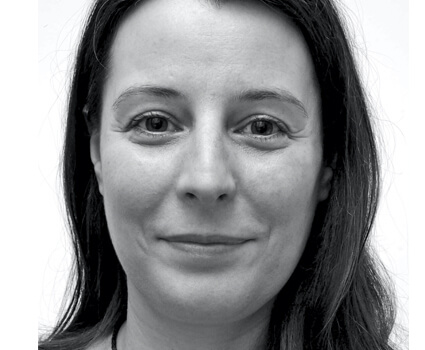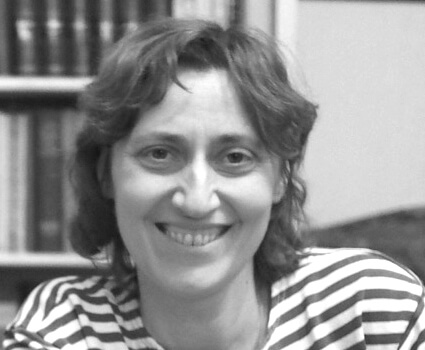Eisenstein's House
“Cinema comes to life where the collision between different cinematic measures of movement and vibration begins.”
Sergei Eisenstein




Virtual Reality

Eisenstein‘s small flat in a building owned by the film studio Mosfilm was more than just a place to live. Here he prepared his film productions and lectures for the Film Institute. The apartment itself resembles an installation by Eisenstein: it was a laboratory of art and science. Here he wrote, painted and investigated the laws of art, the psychology of creation and perception. The Eisenstein apartment was a place of living history. His collections contained objects from diverse cultures and historical periods. For the first time, our virtual reconstruction grants access to this unique space. Visually it combines realism and abstraction. Each object tells a story and leads us into Eisenstein’s world. The apartment becomes a portrait of Eisenstein’s mind.
3D Sound
Eisenstein’s montage theory and experiments with sound film convey
his courageous and free way of thinking.For his film “The General Line” he had created a system of sounds in film. One of its elements is the use of the world’s first electronic instrument – the Theremin. Eisenstein’s love of experiments and his idea of sound montage inspired our sound research. Most probably, Eisenstein meant to use the Theremin for a scene in the end of “The General Line”. We have developed a Virtual Theremin. Playing it you will be able to accompany this scene.

Infovis

The life of Sergei Eisenstein can be considered along the many film projects he pursued, the various people he met and worked with, and the places he visited seldom or often. The Infovis experience provides overviews and insights in three distinct views: Spiral, Network and Timelines. Each view provides the audience with a different perspective on Eisenstein’s life highlighting some aspects from the vast universe of his professional and personal events.
Objects and their stories
A selection of objects from Sergei Eisenstein’s apartment.
Each one is connected to an aspect of his life.
The object’s stories reflect his personal, artistic and intellectual world.

About the project
This project grew out of a series of wonderful encounters – with Naum and Vera Kleiman, Katrin Springer, Anna Luise Kiss, in 2020 with our remarkable team and, many times over, with Sergei Eisenstein.
In December 2009, I met Naum Kleiman and visited Eisenstein’s flat for the first time. Back then I wrote down my impressions: In the centre of Moscow, between McDonald’s and a monstrous skyscraper whose façade glows with rainbow-coloured lights, a dark gateway leads to grey apartment buildings. There is no sign on the door pointing the way. It is an address only known to insiders: the flat of one of the founding fathers of cinema. There is a shabby stairwell. On the second floor, Naum Kleiman opens the door. From one second to the next, I’m thrown back to the year 1935. Books, notes, and sketches for Eisenstein’s films, pictures, Mexican rugs and Japanese theatre masks cover the walls from the ceiling to the floor. The table is set between Bauhaus chairs. It seems as if Sergei Eisenstein is about to walk out of the kitchen. Over the past 40 years, filmmakers from all over the world have written entries in the guestbook: Douglas Sirk and Claude Chabrol, Wim Wenders and Volker Schlöndorff.
We sat on Eisenstein’s chairs and drank tea, and the outside world receded into the distance. We talked late into the night about film, society, Russia and, it seemed, about a cultural history spanning the entire globe.” This encounter resulted in Film Cinema: A Public Affair, which I made together with Katrin Springer as the producer. The film premiered at the Berlin Film Festival in 2015. We feared that the Eisenstein flat might be closed down, just like the Moscow Film Museum. I had shot a lot of material there which I hadn’t used, and I wondered how I might best take advantage of it. Katrin and I developed an idea that seemed completely crazy back then: to recreate the flat in VR using my film footage and to link it to a website about Sergei Eisenstein. But initially, we lacked funding and partners for the project. In 2018, Eisenstein’s flat really did close down. A universe disappeared.
Our meeting with Anna Luise Kiss unexpectedly opened a new door: The Film University Babelsberg KONRAD WOLF joined us as a partner. This is how the concept for the Collisions research project was created. Thanks to funding from EFRE, we were able to start work in May 2020.
It was strange that this project began during the extreme conditions of the pandemic. Suddenly, for many of us the outside world receded into the distance. That is why we are all the happier that our project provides a way for people all over the world, hopefully in the near future, to visit Eisenstein’s flat virtually. A wide variety of discoveries await them there: about film, society, Russia and, perhaps, a cultural history spanning the entire globe.
Tatiana Brandrup
The current political situation has created a global call for boycotting Russian culture. The reasons for this are understandable.
However: In the Soviet Union (as well as in Russia) there were always individuals who used culture to resist tyranny and violence. Sergei Eisenstein was one of them. This was the reason that those in power in the Soviet Union and Russia did not take any action to preserve his heritage. In spite of worldwide protests in 2018 the Eisenstein apartment was disassembled by cultural bureaucrats. Eisenstein’s apartment had been, for decades, of enormous importance for Russian civil society – because of its lively atmosphere of cultural exchange and diversity.
A boycott of Eisenstein’s works in the West would fulfill exactly the goals which Russian cultural policy is aiming for.
It would ignore the immense power of an artist to create political resistance through art.
And, by the way: Eisenstein was from Riga. His Jewish father’s family came from Ukraine.
One aspect of my interest in Sergei Eisenstein is his work as an artist living in a totalitarian regime. I am moved by his curiosity and openness to world culture, which was in complete opposition to the system that surrounded him. My grandmother came from Russia, my grandfather from Ukraine. I grew up in the West in a world divided by the Iron Curtain, into two polarized systems: Communism and capitalism, East and West, dictatorship and freedom. A third perspective seemed impossible.
Sergei Eisenstein had to move between these opposing poles. Sometimes he was forced to make painful compromises and accede to the authorities. Nevertheless, he created a realm for himself – in his art, his theoretical work and in his apartment. To me, this sense of self-empowerment is inspiring. It shows that in a system that appears to be dual, a third possibility may exist after all. In the light of current political polarization today, this is more important than ever.
Critics of Sergei Eisenstein accuse him of being a director of manipulative propaganda films for Stalin. I maintain that this is a perspective based on an incomplete picture of his work and biography.
Eisenstein’s relevance today as a Soviet artist is not limited to being one of the founding fathers of the European avantgarde. His understanding of cultural diversity is especially timely in today’s world. The global tendency to homogenize culture not only undermines cultural elements that are unexpected and unusual – it creates fertile soil for xenophobia, nationalism and war. In contradistinction, Eisenstein’s approach to world culture sets an example of a respectful understanding of different cultures and their potential to inspire one another. In Eisenstein’s universe we encounter great minds from Europe, North and South America, and Asia. His artistic vision was related to, for example, the work of the star of the Peking Opera, Mei Lan Fang, Irish writer James Joyce, Mexican painter Jose Orozco, and Afro-American actor Paul Robeson. Eisenstein was not only one of the pioneers who promoted cinema to the level of art. He was also an artist and a scholar. He, who was famous as an avantgarde artist, looked for guidance in the great classical traditions. He studied ancient tragedy and architecture, medieval theater and the painting of the Renaissance, poetry and prose of Romanticism and Symbolism. He was inspired by El Greco and Callot, Bach and Goethe, Pushkin and Mussorgsky, Daumier and Zola. The fact that Eisenstein was called the “Leonardo da Vinci of cinema” addressed not only the great diversity of his talents – film director and artist, scholar and teacher, writer and choreographer. It also related to the elaborate sense of harmony in his films.
Many are unaware that Soviet aesthetics of that time – Eisenstein’s films, Alexander Rodchenko’s photographs, or the art of El Lissitzky and other constructivists – still influence the media all over the world today. Image compositions in Hollywood films, YouTube and advertising clips, among others, are based on cinematic elements which Eisenstein invented – and, of course, his montage technique. The development and visualization of social visons beyond borders is still one of the central challenges to art today. The beginning 20th century, too, was an era in search of a utopia.
It is this atmosphere of beginnings and new horizons that we want to create access to.
“BROTHERS”
This is the famous quote from Sergei Eisenstein‘s 1925 silent film „Battleship Potemkin“: A sailor convinces the boat‘s crew not to shoot their own crew members, whom the captain wants to have shot as an act of intimidation.
The film is an appeal against violence and for humanity. In view of current events, the new relevance of Battleship Potemkin is deeply concerning. Sergei Eisenstein represents a Russian tradition that began with Pushkin: To strengthen civil society through art.
With our research project we wish to contribute to this process on an international level.
Partners
The project Kollisionen is a cooperation of the Film University Babelsberg KONRAD WOLF Potsdam with the University of Applied Sciences Potsdam and and is funded by the European Regional Development Fund (ERDF) within the framework of the StaF funding program.


























